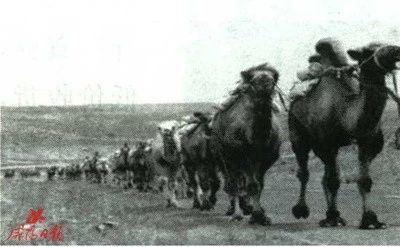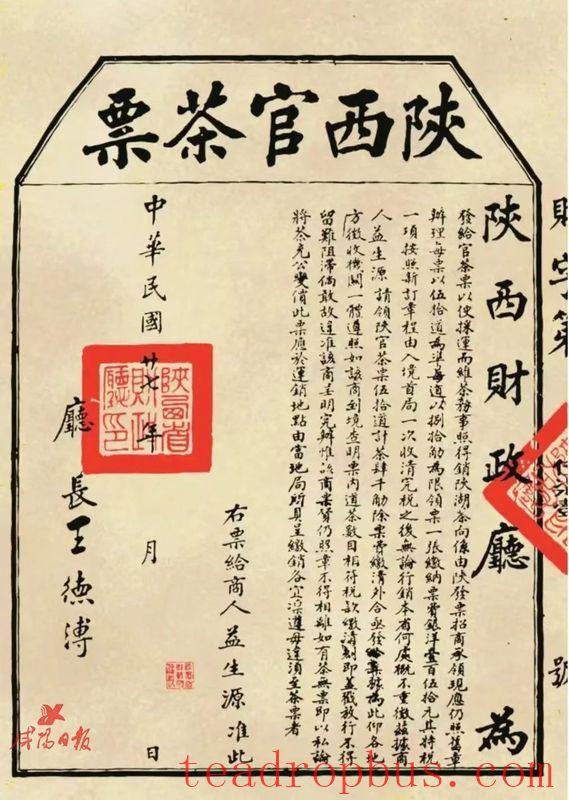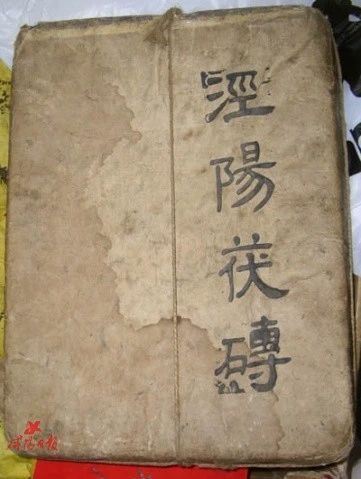China is the birthplace of Tea and the first country to cultivate tea plants. Over a long period, Chinese people have developed a splendid Tea culture through their tea-related practices, making tea a symbol of traditional Chinese culture. Xianyang, located in the heart of the Guanzhong Plain in Shaanxi Province, does not grow tea but has a long history associated with tea.

Camel caravans transporting tea.
Tracing the Roots of Fu Tea
A Thousand-Year Tradition of Ancient Methods
The origins of tea cultivation, production, and consumption in Xianyang are yet to be fully verified. Historically, Xianyang has been a cultural and economic exchange center in northwest China, and its tea culture developed alongside the historical tea-horse trade. Records from “The Chronicles of Huayang – The History of Ba” by Chang Qiu during the Jin Dynasty indicate that tea was offered as tribute during the early Western Zhou Dynasty, suggesting a thriving tea industry in the Shaanxi region at that time. With the rise of nomadic tribes in the northwest, who required tea to help digest their diet, merchants began trading tea for horses during the Tang and Song dynasties. By the early Ming dynasty, the imperial court established monopolies on tea trade in Qinzhou, Taozhou, Hezhou, and other regions, setting up tea-horse offices to manage the tea trade. Each year, tea from Hanzhong and Sichuan was transported here to be exchanged for horses, with private traders strictly prohibited. Due to various issues with the state monopoly on tea, in 1490 (the third year of Hongzhi), the Ming court implemented a system of inviting merchants to participate in border tea trade and introduced incentives to encourage merchant participation. Under these policies, merchants from Xianyang actively engaged in border tea trade with the northwest and southwest regions, developing a complete set of advanced tea processing techniques over time. After the Qing Dynasty consolidated its rule, as the area of imperial pastures grew, the tea-horse trade lost its value and was officially discontinued in 1735 (the thirteenth year of Yongzheng). At this stage, the tea trade in northwest China entered a fully commercialized phase. During this period, Jingyang, with its unique advantages, became the center for the processing of Hunan tea and a hub for tea transportation in Shaanxi and Gansu provinces. Thus, merchants from Xianyang, drawing on their mature tea processing and brick-tea pressing experience accumulated since the Ming Dynasty, produced the renowned “Fu Tea” (also known as “Fu Cha” or “Fucha”).

Shaanxi Official Tea Tickets.
The history of Xianyang Fu Tea production skills is long-standing, with Jingyang County being the sole place of production. According to relevant literature, there was a saying about Jingyang Fu Brick Tea that it could not be made under three conditions: without the water of Jingyang, without the climate of Jingyang, and without the technology of Jingyang. Xianyang Fu Tea is a compressed fermented tea, belonging to the category of dark tea, and is known as the “Black Gold of the Silk Road.” It is named so due to its health benefits similar to those of Poria cocos and because it was traditionally produced only during the hot summer months. The main raw material for producing Fu Tea is dark tea from Anhua, Hunan, now mostly grown in the Qin and Ba mountain ranges. Unlike Green Tea and other fresh teas, the timing of picking fresh leaves for Fu Tea production is less critical, extending from spring to autumn. Traditional tools used in Fu Tea production include bamboo baskets, willow baskets, choppers, wooden windmills, hammers, and sticks. Its production process differs from other types of tea, requiring nearly thirty steps, including sorting, cutting, sieving, winnowing, manual picking, blending and weighing, boiling tea syrup, forming bricks, canning, tying, stir-frying, building blocks, bundling, coning, flower induction, and drying. Flower induction is the most critical step in the entire production process, where the tea master places the compressed Fu Brick Tea in an environment with specific temperature and humidity conditions to allow the growth of a rich yellow fungus called “Eurotium cristatum,” also known as “Golden Flowers.” These flowers have a strong aroma and are beneficial enzymes, classified as a state second-level confidential fungal species, representing the essence of Fu Tea. The number of flowers determines the quality of Fu Tea; more flowers mean better fragrance and taste. They improve the taste and texture of the tea and have health benefits such as detoxification, disease prevention, digestion aid, and fat reduction. Nowadays, with the continuous development of science and technology, the production of Xianyang Fu Tea mostly uses mechanization, allowing for tea production throughout the year. The heat of stir-frying, the tightness of building blocks, and the temperature of flower induction can all be effectively controlled, and “Golden Flower Fermentation Technology” has been developed, enabling independent extraction and proliferation of golden flowers in various forms and quantities. The people of Xianyang have become increasingly familiar with traditional Fu Tea production skills and preparation methods, integrating natural and social considerations into daily life, which together form the core spirit of humility, harmony, propriety, and respect in Xianyang's tea culture. Moreover, they have gradually developed good methods for brewing and serving tea. In 2025, the production skills of dark tea (Xianyang Fu Tea production skills) were listed as a national-level intangible cultural heritage project in the fifth batch.

Fu Tea.
Industry Quality Improvement and Efficiency Enhancement
New Blossoms Brought About by the Times
For a long time, Xianyang Fu Tea has been proven by countless consumers to have miraculous effects, such as aiding digestion, reducing fat, treating digestive discomfort, regulating Uric acid, and protecting the liver. Modern scholars have further studied and found that the golden flowers in Fu Tea can secrete certain amounts of amylase and oxidase, catalyzing the conversion of proteins and starches in tea leaves into monosaccharides and catalyzing the oxidation of polyphenolic compounds into beneficial substances, thereby improving the taste and texture of the tea. Regular consumption of Fu Tea helps digestion and effectively regulates human metabolism, playing a certain role in health maintenance and disease prevention. Due to its unique health benefits, Xianyang Fu Tea has attracted widespread attention from domestic and international experts and scholars, with increasing sales both domestically and internationally.
In recent years, the city of Xianyang has prioritized the development of the Fu Tea industry as a key driver for food industry growth, promoting local income, showcasing the charm of Xianyang culture, and participating in the construction of the Silk Road Economic Belt. The city has emphasized planning guidance, strengthened support services, cultivated leading enterprises, and created distinctive brands to promote high-quality development of the Fu Tea industry. At the 2024 China Tea Brand Construction Forum held on May 10, 2024, a series of survey results were announced, among which Xianyang Fu Tea ranked in the top 50 regional public tea brands in China, with a brand valuation of 3.586 billion yuan. Currently, there are over 70 Fu Tea production and processing companies and nearly 120 marketing companies in the city, employing over 20,000 people, with an annual comprehensive output value close to 3 billion yuan. Products are exported to more than 40 countries and regions, including the United States, Russia, South Korea, Japan, and Central Asia, making Xianyang Fu Tea a symbol of Shaanxi and a representative element of “Chinese Flavor” globally.
In modern times, the production skills of Xianyang Fu Tea have been successively included in provincial and national intangible cultural heritage lists due to their rich historical and cultural significance and unique production processes. In recent years, relevant departments in Xianyang have attached great importance to the protection and inheritance of Xianyang Fu Tea production skills. They have made significant efforts in cultivating the culture of Xianyang Fu Tea, telling the story of Xianyang Fu Tea, and promoting the inheritance and protection of Xianyang Fu Tea production skills. A series of cultural brands and tourism projects related to Xianyang Fu Tea, such as the Chinese Fu Tea Heritage Museum, Yuxingzhong Tea Exhibition Hall, and Jingyang Brick Tea Heritage Museum